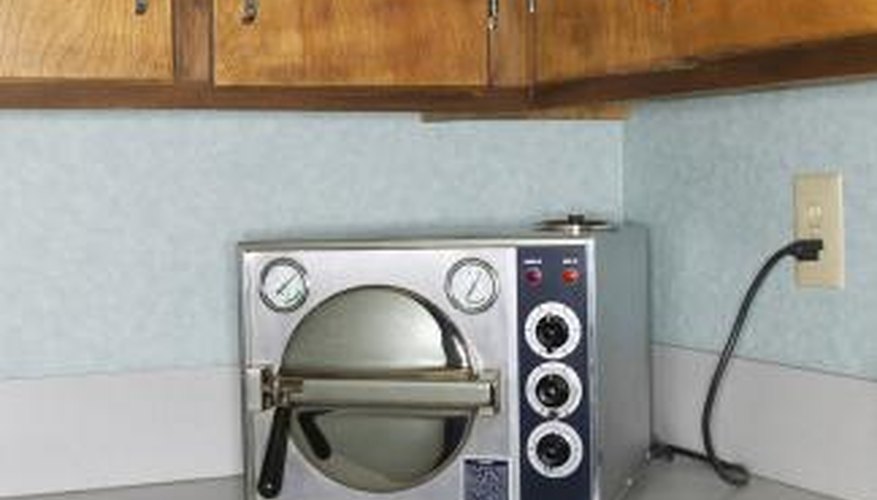An autoclave is a machine that applies heat to the contents of a container. Autoclaves are found in biological laboratories because the heat can destroy bacteria and viruses, and they also are useful in manufacturing because the heat can help process resins, plastics and ceramics. The main limitations of the autoclave involve the resources required to operate it and the dangers of operating this machine.
Safety
An autoclave works by using very hot vapour to treat the materials inside the autoclave in a very high-pressure environment. If the autoclave cracks or leaks, this vapour can scald the autoclave operator. According to the University of Wisconsin, a laboratory autoclave may operate using steam heated to 134 degrees Celsius, and it may have a pressure of as much as 13.6 Kilogram per square inch. An industrial autoclave can operate at an even higher temperature of 760 degrees Celsius and a pressure of 4.54 Kilogram per square inch, according to the Thermal Equipment Corporation.
- An autoclave works by using very hot vapour to treat the materials inside the autoclave in a very high-pressure environment.
- An industrial autoclave can operate at an even higher temperature of 760 degrees Celsius and a pressure of 4.54 Kilogram per square inch, according to the Thermal Equipment Corporation.
Environment
The environment around the autoclave must be carefully prepared so that the autoclave can be used safely. The autoclave's outer shell also heats up when it is in operation, so it must stand on a floor or counter that can withstand the heat. The condensate that a laboratory autoclave releases is still extremely hot, so it is recommended that the autoclave also have a supply of cold water so the condensate does not melt the drainpipes.
Cost
Building a large autoclave is expensive, because it needs insulation, water supply and sturdy metal construction. An autoclave may not be the best tool if an industrial process requires applying heat to large objects that cannot easily be disassembled into smaller parts. Steam autoclaves do not supply enough heat for some industrial processes, so an autoclave may need another fuel, such as gas or oil.
Equipment
An autoclave is a reliable sterilizer, but it's not the answer for every sterilising need. A laboratory or hospital autoclave can melt plastic equipment with its steam. The organisation may need to purchase equipment made from plastic that does not melt or deform at the temperature the autoclave uses, if it can't use glass or steel equipment. The autoclave can't sterilise some items such as cloth and linens without destroying them.
- An autoclave is a reliable sterilizer, but it's not the answer for every sterilising need.
- The autoclave can't sterilise some items such as cloth and linens without destroying them.
Food Processing
An autoclave produces steam that is too hot for some sterilisation processes. According to Raritan Valley Community College, farms don't use an autoclave to kill bacteria in milk, because the heat changes the taste of the milk.
